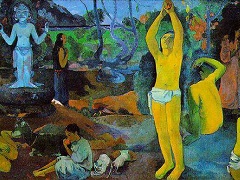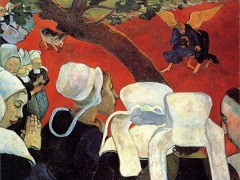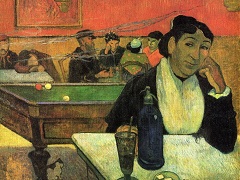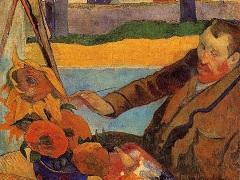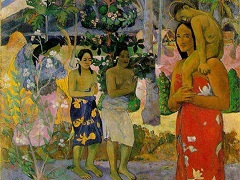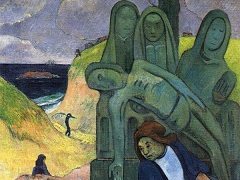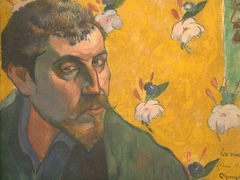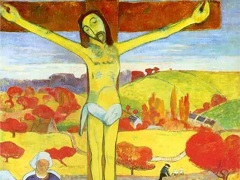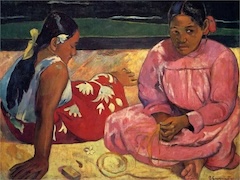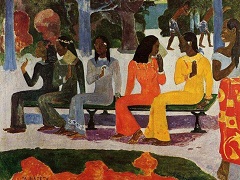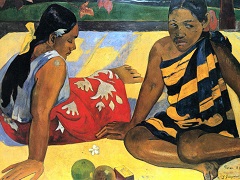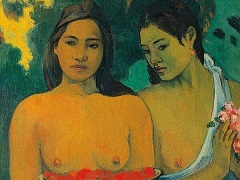The Spirit of the Dead Watches, 1892 by Paul Gauguin
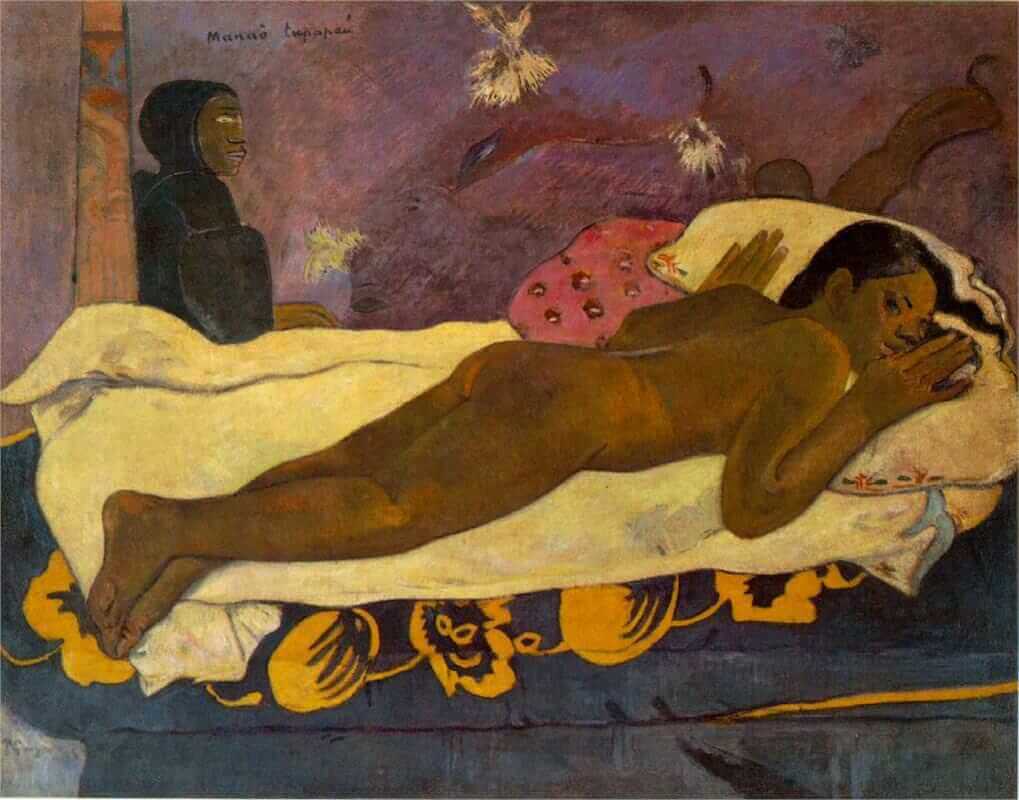
Gauguin's symbolism, his desire to be "mysterious," is nowhere more evident than in this canvas. Perhaps the Olympia of Manet (which Gauguin once copied) is related to it, but clearly Gauguin, unlike the older master, intended more than simply a beautifully painted nude. Fortunately, he has himself told us something of his aim, for in his letters and journals he wrote extensively of this picture, as though it were a characteristic example of the methods and goals of his art:
A young native girl lies on her belly, showing a portion of her frightened face. She lies on a bed covered with a blue pareo and a light chrome-yellow sheet . . . Captured by a form, a movement, I paint them with no other preoccupation than to execute a nude. As it stands, it is a slightly indecent study of a nude, and yet I wish to make a chaste picture of it, and imbue it with the native feeling, character, and tradition.
The pareo being closely linked with the life of a Tahitian, I use it as a bedspread. The sheet, of bark-cloth, must be yellow, because, in this color, it arouses something unexpected for the spectator, and because it suggests lamplight... I need a background of terror, purple is clearly indicated. And now the musical part of the picture is all set out . . .
I see only fear. What kind of fear? Certainly not the fear of Suzanna surprised by the elders. That does not exist in Oceania. The tupapau (Spirit of the Dead) is clearly indicated. For the natives it is a constant dread . . . Once I have found my tupapau I attach myself completely to it, and make it the motif of my picture. The nude takes second place.
What can a spirit be, for a Maori? She knows neither theater or novels, and when she thinks of someone dead, she thinks necessarily of someone she has seen. My spirit can only be an ordinary little woman . . .
"The title has two meanings, either she thinks of the spirit; or, the spirit thinks of her.
To sum up: the musical part: undulating horizontal lines, blue and orange harmonies tied together by yellows and purples (which are their derivatives), lit by greenish sparks. The literary part: the soul of a living person linked to the spirit of the dead. Night and Day."
If we read "abstract" for "musical" we can understand something of how Gauguin, caught by a feeling he does not quite understand, has allowed it to suggest his picture to him, and has then tried to translate this feeling into purely visual (rather than literary) terms.

